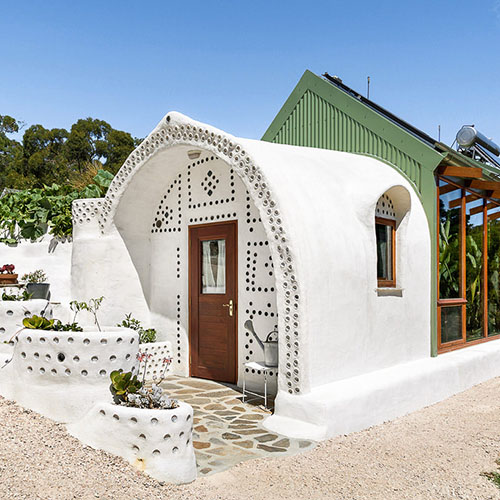22 August 2022

A new study by The University of South Australia has tested and verified the structural integrity of walls constructed from tyres packed with earth, with the results potentially providing new opportunities for the reuse of end-of-life tyres in the construction industry.
Tyre waste represents a major sustainability challenge globally, with Australia alone generating an average of 55 million (450,000 tonnes) end-of-life tyres each year.
While earth-packed tyre walls have been used in niche construction scenarios for decades, there has previously been no strong empirical data available to support their use, a fact that has limited their wider uptake by architects and engineers.
Supported by Tyre Stewardship Australia, a UniSA team consisting of Yachong Xu, Martin Freney, Reza Hassanli, Yan Zhuge, Mizanur Rahman and Rajibul Karim, has rigorously assessed the structural integrity of a test tyre wall to examine how the structure performed under various stressors.

According to Dr Martin Freney, the wall proved to be as structurally sound as conventional walls used in residential applications.
“The wall we tested was the first of its kind to be scientifically tested in this fashion, and all the data indicates tyre walls can be extremely strong and safe structures,” Dr Freney says.
“While that structural integrity has been observed for many years in applications such as the retaining walls in earth-sheltered, Earthship homes, the lack of supporting data has prevented wider uptake of tyre walls by engineers and architects, and we’re hoping this study will change that and expand the range of projects in which these walls are used.”
In considering expanded uses for tyre walls, Dr Freney suggests several unique characteristics of the structures may offer benefits over some traditional building approaches, particularly for retaining walls.
“Not only are the tyre walls as structurally sound as concrete or wood sleeper retaining walls, they are also extremely resilient.
“Unlike a concrete wall, we found these walls have the ability to ‘bounce back into shape’ following impact, such as from an earthquake.”
“And if a drainage material such as recycled concrete rubble or crushed bricks is used to fill the tyres, they also offer excellent drainage, which can be a major consideration in many retaining wall scenarios. Furthermore, the use of recycled fill materials reduces the environmental impact of the wall.”
While the study only tested one real world wall as part of the project, UniSA PhD candidate Yachong Xu developed software models that allow the data obtained to be extrapolated to other designs, making the results applicable to a wide range of scenarios and stakeholders.
“We really believe this research provides a strong evidence base for the expanded use of tyre walls in housing and other applications, and the next step will be to engage with an industry partner to develop a range of real-world applications for tyre walls,” Dr Freney says.
…………………………………………………………………………………………………………………………
Contact for interview: Dr Martin Freney E: martin.freney@unisa.edu.au
Media contacts: Annabel Mansfield M+61 479 182 489 E: Annabel.Mansfield@unisa.edu.au
Dan Lander M: +61 408 882 809 E: dan.lander@unisa.edu.au



